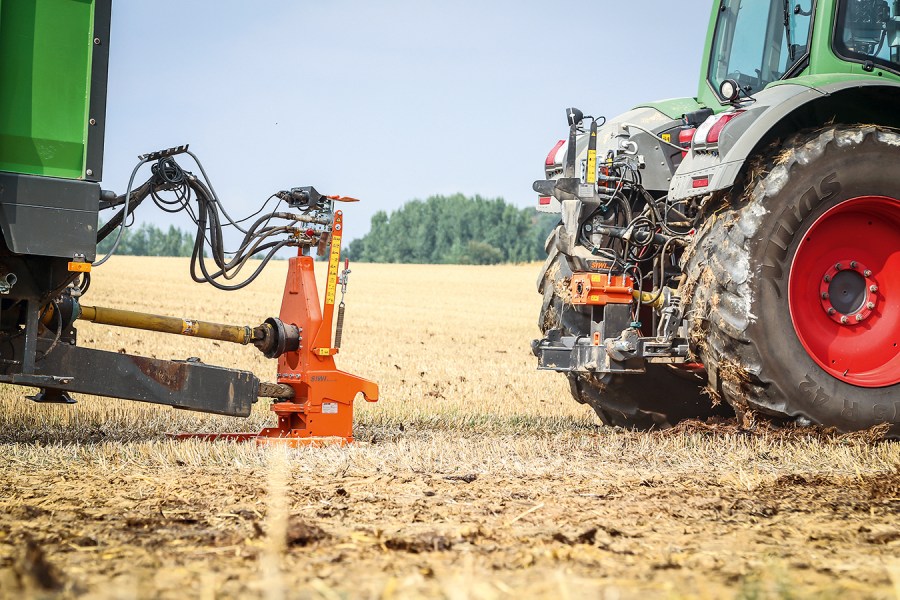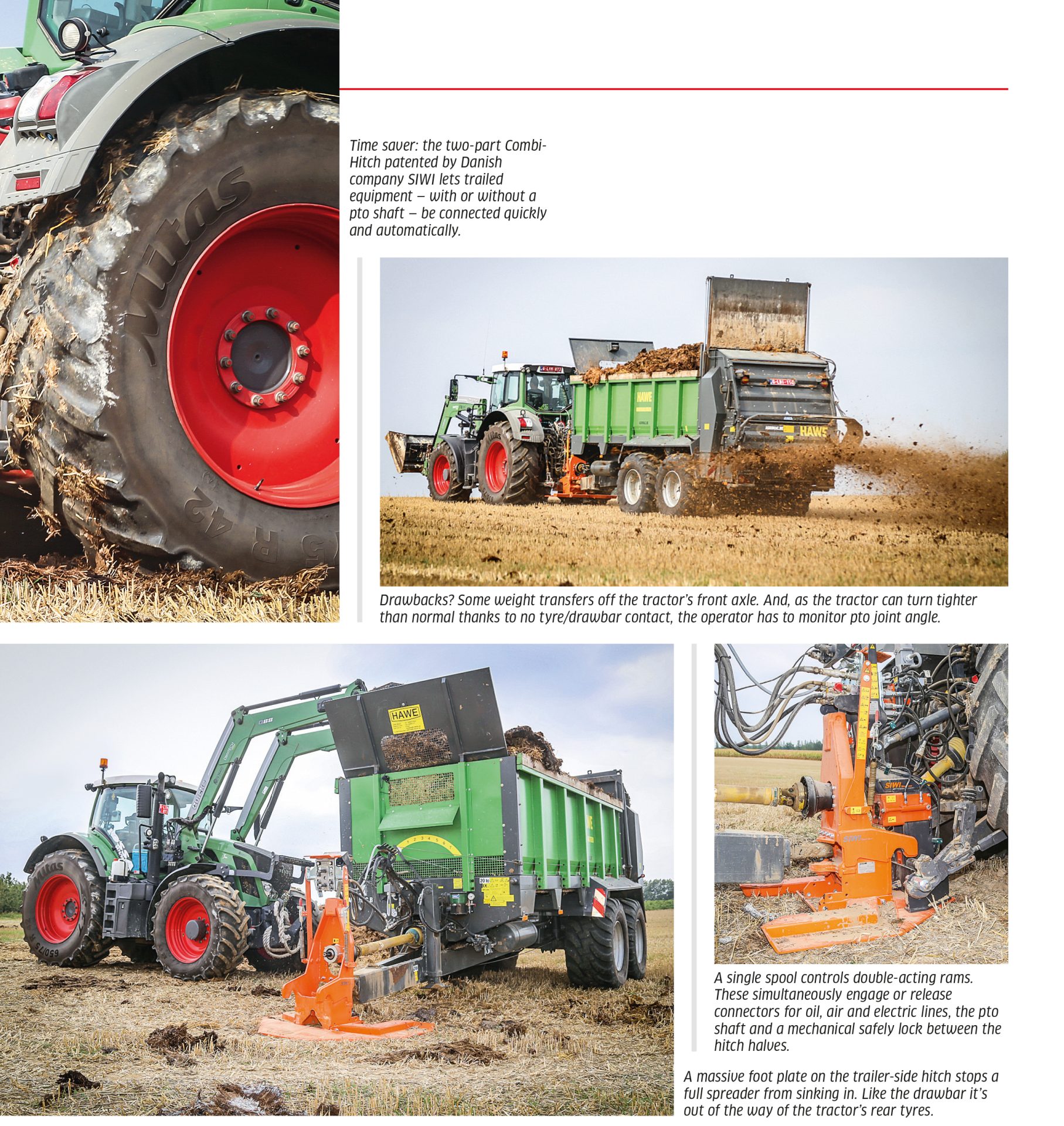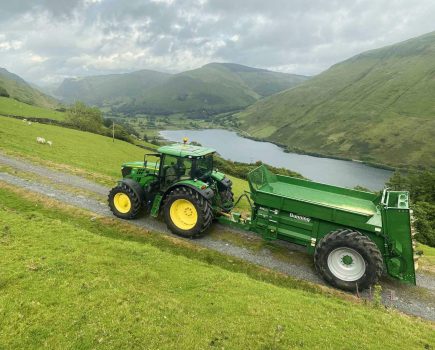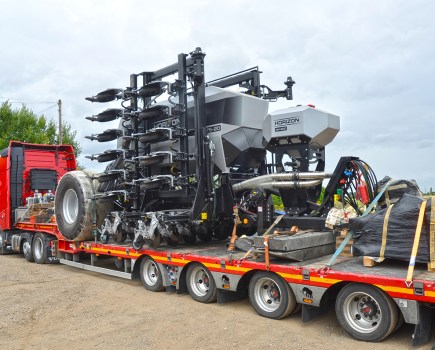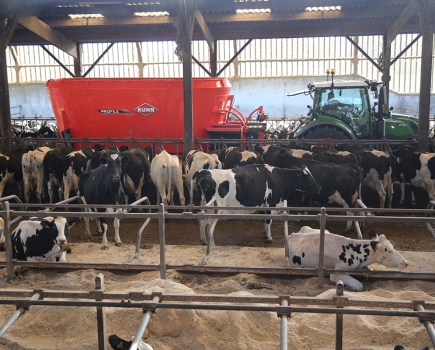SIWI quick coupler: A hitch to rule them all?
Over the years a lot of ingenuity has gone into producing a universal quick-coupling system to let prime movers swiftly hook up to trailed implements. Now Danish firm SIWI has something that might just be the answer, as profi and Dutch magazine Trekker discover…
Fieldwork often ties up two tractors where one could do the work, if it wasn’t for the business of hitching and unhitching. A pto shaft only adds effort and faff, so then there’s even less incentive to use the one tractor; as a result most people take two and jump between them. Belgian contractor Gert Jossa used to work that way when spreading muck and compost. Until, finally tiring of the cost and inefficiency of two-tractor working, he looked around for a solution … and discovered SIWI’s patented Combi-Hitch.
The company originally developed its system to help Danish farmers at silage time. A common way of working there is for a forager to self-load a towed trailer: tractors just run the trailers between the field and clamp. That means a lot of swapping of trailers, which has to be done pretty sharply or lost time builds up. SIWI’s system has since evolved so it can now couple up to eight oil lines, two electric lines and a pto, straight from the cab.
The Combi-Hitch is necessarily a game of two halves. The tractor or forager caries a sizeable frame on its threepoint linkage, with the frame’s mass concentrated as close to the tractor as possible. At the top of the frame is a moveable connecter block for oil, air and electric lines; below that is a fixed hook for the trailer-side frame; and halfway down is a carrier/connector unit for the pto shaft. There’s also a mechanical lock to anchor the frame halves together.
The trailer hosts a mirror image frame. Sitting on a massive plate foot, this frame has a pair of forward- facing hooks to engage with their mates on the tractor; an upper receiver for the tractor-side hook; a rear-facing ball hitch for the trailer; and counterparts for the hydraulic/electric block and pto. To pick up a trailer you lower your tractor’s linkage, back under the trailer frame and lift. Three hooks engage (two on the trailer side, one on the tractor side), and up comes the drawbar. Then to connect the hydraulics, electric and pto, you operate one spool: rams push the tractor-side coupler block rearwards into place and slide a coupling sleeve over the trailerside pto stub. Simultaneously, a mechanical interlock between the hitch halves engages. The trailerside coupling block is carried by sprung arms so it can move back and exert pressure. Dropping off a trailer reverses the process, taking seconds while you stay clean and dry up in the cab. Gert Jossa is so far very pleased with the way the Combi-Hitch works with his loader- equipped Fendt 826 Vario, saying the only downside is that between them, the hitch’s mass and rearward trailer coupling take weight off the tractor’s front axle. As a busy contractor he’s found that the investment paid for itself quite quickly, both in time saved and the freeing of a second tractor or materials handler for other work.
Other points worth a mention
●The Combi-Hitch comes with or without a pto facility
●Ball hitch coupling makes for a smoother ride
●The sizeable foot plate stops a parked trailer from sinking into wet land
●In some set-ups, clearance under the hitch may be reduced
●Capacities are 4.0t vertical hitch load and a 34t towing capability
●Automatic connection of ISObus and load sensing lines is optional
●There’s no UK importer. Prices for a ptocapable system are €10,633 (tractor-side frame) and €5,791 (trailer-side frame)
●A promo video is at bit.ly/siwihitch.
Summary:
SIWI’s Combi-Hitch is an interesting and apparently effective way to speed up trailer swaps in the field or to release a second prime mover for other duties. Hitching or dropping a trailer takes only a few seconds, while the driver stays in the cab.
Tobias Bensing, Matthijs Verhagen

